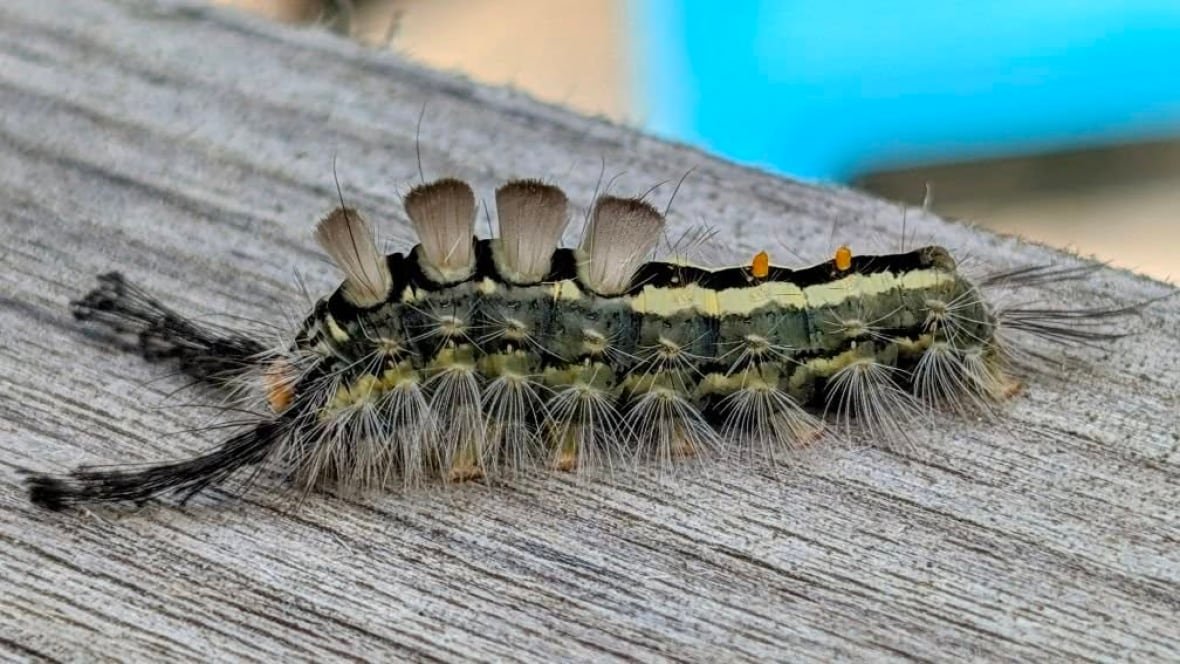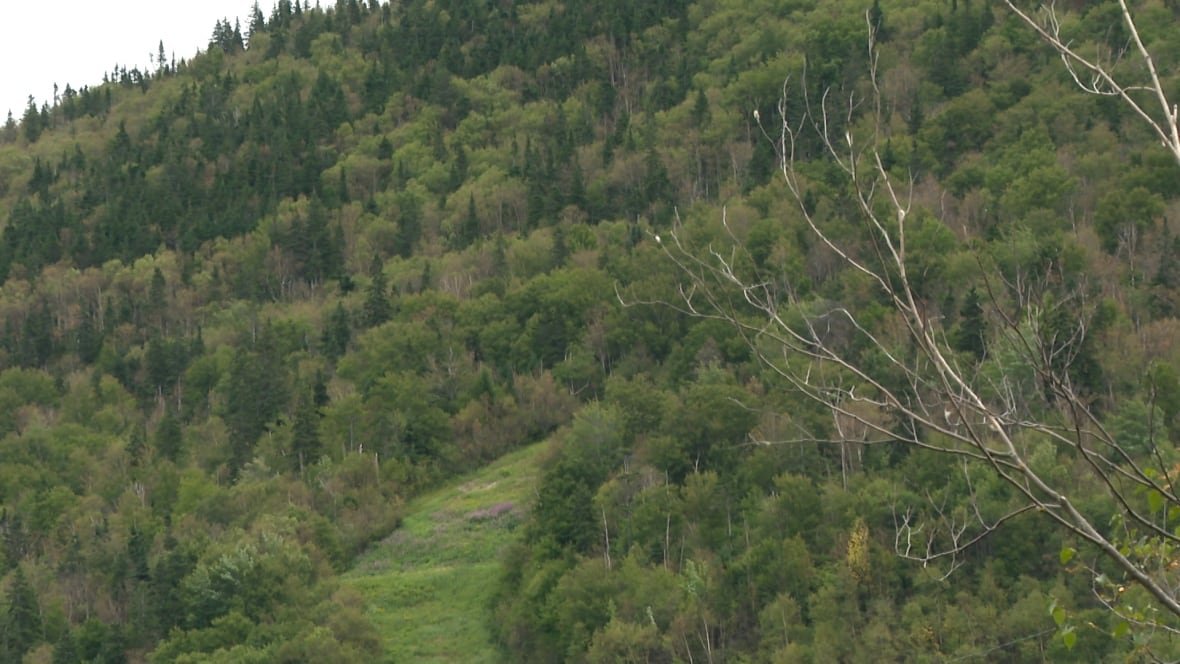
During this summer in the Humber Valley region of Newfoundland, fuzzy caterpillars with orange and white markings thrived, feeding on various tree species and leaving brown patches across the area.
The white tussock moth caterpillars were abundant, found on patios and dropping from trees.
Mark Grady, a resident of Corner Brook, described the situation, saying, “They were everywhere, up in the trees, down in the bushes.”
Research scientist Joe Bowden from the Atlantic Forestry Centre mentioned that the surge in white tussock moth population this summer in Newfoundland could be linked to climate change and the hot, dry weather conditions.
Bowden explained, “Species are shifting earlier and being redistributed on a large scale globally due to climate change.”

Joe Bowden observed tree damage in several areas, including White Bay, Green Bay, Corner Brook, St. Albans, Conne River, and along the Bay d’Espoir Highway.
He noted that the impact was concentrated in specific regions of Newfoundland and did not extend to other parts of the country.
By mid-August, Bowden stated that the caterpillars had completed their feeding phase, and male white tussock moths were now flying in the region.

Female moths undergo pupation without wings, staying near the cocoon to lay eggs and endure the winter months.
These moths pupate on various surfaces, with sticky white cocoons visible on sides of homes and decks.
Bowden predicted that the high moth population levels would persist for several years, leading to disease outbreaks that would eventually reduce the population after three to five years.
Download our free CBC News app to receive push alerts for CBC Newfoundland and Labrador. Subscribe to our daily headlines newsletter here. Visit our landing page here.
<a href="https://www.cbc.ca/news/canada/newfoundland-labrador/fuzzy-caterpillar-destroys-foliage-in-parts-of-western-central-newfoundland-1.761

